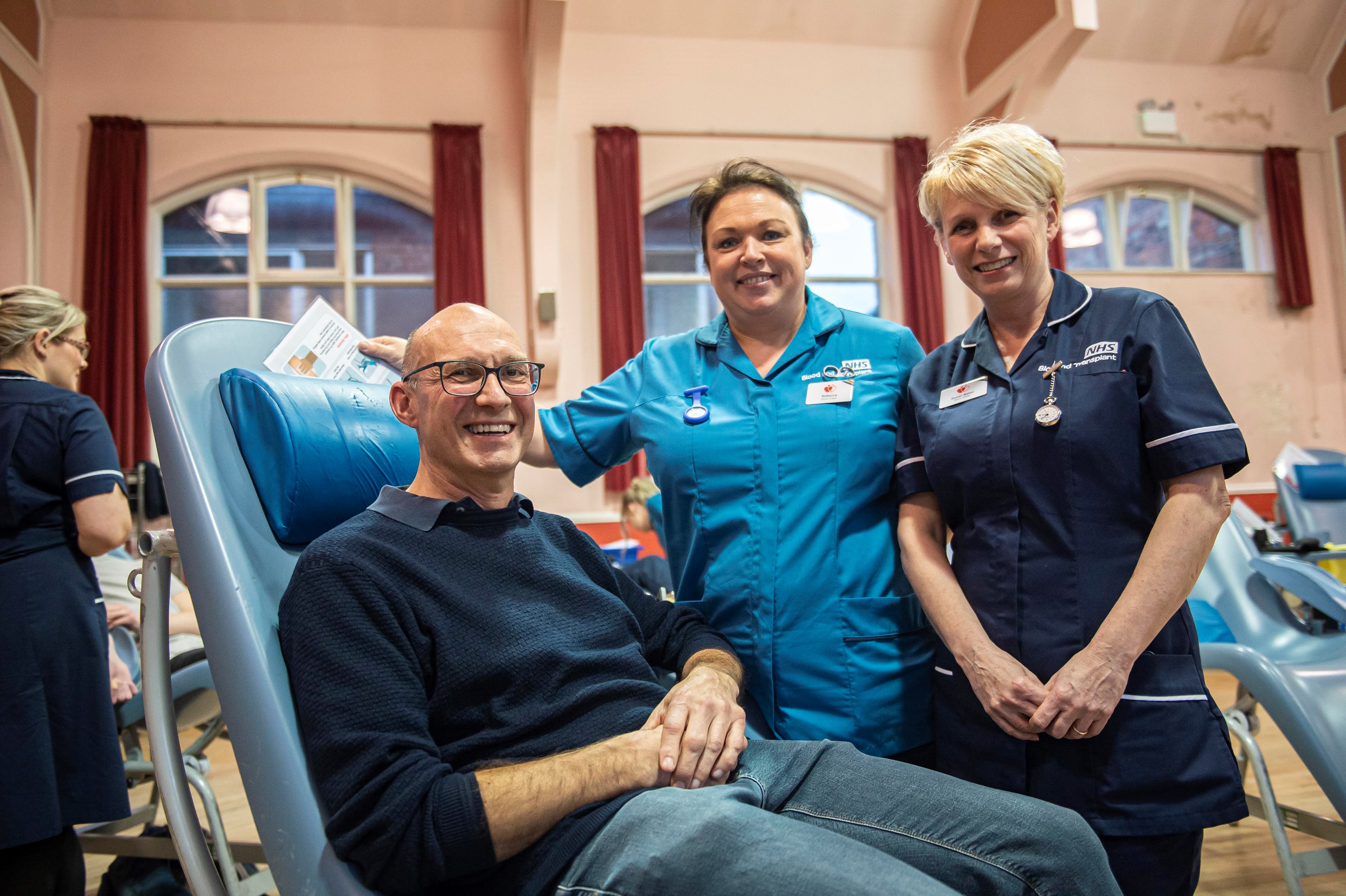Why men make good blood donors
Iron levels and the absence of some antibodies help make men good donors
The need for young men to start donating blood is vital due to a serious gender imbalance in new donors
During 2019, new statistics show that for every 100 women who started giving blood, only 70 men did the same (1)(2). Only 41% of new donors were men last year.
This is a concern because men have higher iron levels, and only men’s blood can be used for some transfusions and products. Without more men starting to give blood, blood stocks will come under increasing pressure in future years.
NHS Blood and Transplant now has a 26% increase in the target number of new, first time male donors it needs this year, to get a better balance for the long term (3). Throughout January, NHSBT is running a national campaign about ordinary men becoming extraordinary by donating blood, by highlighting the unusual ways their blood can be used.
Bob Downes is supporting the campaign. Bob has given the most blood to NHSBT in the 21st century of anyone whose blood can be used for complete blood transfusions in newborn babies. Complete blood transfusions in newborns are only done with blood from men who are O negative and also CMV negative. Bob has donated 74 times since the year 2000, the most of any donor of this kind (4).
Some neonatal transfusions can only be done with blood from male donors. Bob, from Elloughton near Hull, will donate for the 75th time in the past 20 years this Thursday. Each donation which is used for newborns is split into six small units. The exact number is not clear, and the true number would be lower, but after this week, Bob’s blood could potentially have been transfused into up to 450 babies.
"It's quite staggering to be told that. I am a bit gobsmacked to be honest. It's given me a very warm feeling," said the 63-year-old.
"It's lovely that I can help children. But then again if someone needs your donation, whether they are nine days old or 90, it doesn't matter. It wouldn't make any difference to me who the recipient is, I still feel it's my duty.
“It does make me feel good that I am healthy enough to keep donating at my age."
Mr Downes, who is a retired geography teacher, started donating after his mother in law needed blood transfusions during treatment for leukaemia. He said: “I was staggered at how much blood she needed.”
He added: “Starting to donate blood when you are young could be your first opportunity to give something back to society. It's your first chance to make a significant contribution to society."

Mike Stredder, the head of donor recruitment for NHSBT, said: “All our donors are amazing. But we need more than 68,000 men to start donating blood this year. Men’s blood can be used in extraordinary, lifesaving ways, but we don’t have enough new male donors coming forward. This is not about recruiting as many donors as possible – it’s about getting the right gender mix. We are focusing the campaign on our donor centres, where there is more capacity for new donors.”
NHSBT thinks the recent gender imbalance in new donors is due to combination of factors. A recent research survey (5) indicates men are less likely than women to think that donation will make a difference. There are also less opportunities for successful workplace donation sessions with large number of potential male donors.
In recent years, NHSBT has recruited more on social media, and our social accounts are more popular with women. Over the past year, we’ve engaged with partners such as BT Sport, ITV2, and the computer gaming industry, to try and reach more men.
Firstly, they have higher iron levels, so they’re also less likely to be deferred for low haemoglobin. That is crucial for helping to maintaining a strong donor base, especially for patients who receive many hundreds or thousands of transfusions over their lifetime.
Secondly, women can produce antibodies during pregnancy, even during short pregnancies they don’t even knew about. Antibodies are part of the body’s defence system and they make transfusions more difficult. This means only men’s blood is used for some specialist transfusions and blood products.
To get involved, you can register to give blood today and book an appointment at one of our 23 dedicated blood donor centres.
(1) Last year (2019), for the 11 months to the end of November, of the 126,641 people who gave blood for the first time, 74,645 were female (59%) and 51,999 were male (41%).
(2) The overall donor base is also more balanced towards women. The imbalance has grown over the past five years due to the lower numbers of men starting to donate. At the end of November 2019, NHSBT had 818,831 active donors, of whom 354,345 (43%) were male and 464,486 (57%) female. This compares to a 45%-55% balance five years ago (2014/15).
(3) NHSBT’s male donor recruitment target for 2020 is 68,000. This compares to 54,000 during 2019.
(4) Not all donations from neonatal eligible donors are used for neonatal packs. Some donations are used for standard packs, depending on need at that time.
(5) Survey of 1,762 people carried out in November 2019 who had never donated or donated less than once a year. 6% of men said giving blood doesn’t make a difference, compared to only 1 % of women.